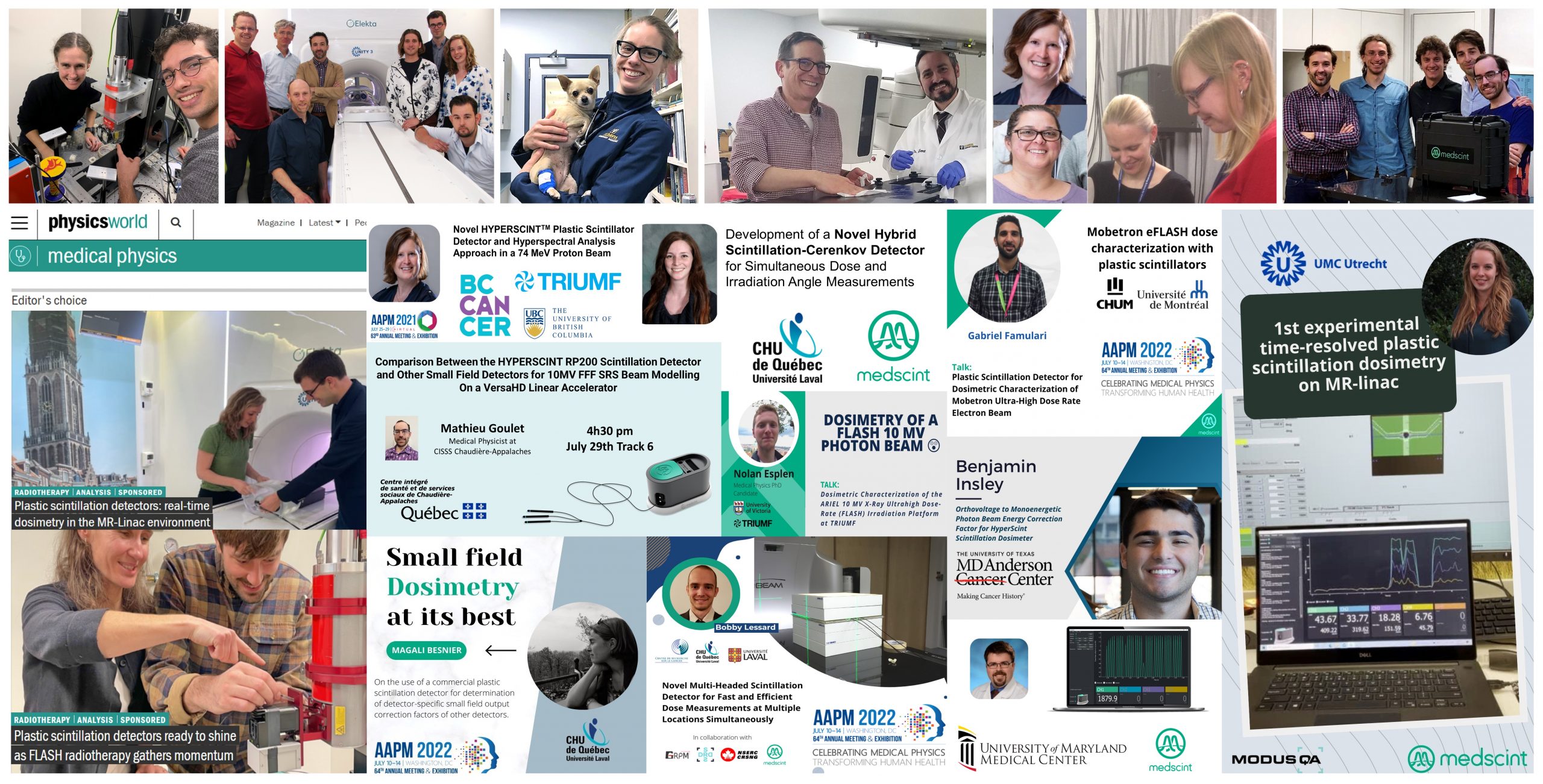Field output correction factors using a fully characterized plastic scintillation detector (HYPERSCINT)
As small fields become increasingly important in radiation therapy, accurate dosimetry is essential for ensuring precise dose calculation and treatment optimization. Despite the availability of small volume detectors, small field dosimetry remains challenging. The new plastic scintillation detector (PSD) from the HYPERCINT RP-200 platform from Medscint offers a promising solution with minimal correction requirements for small field measurements.
This study focused on characterizing the field output correction factors of the PSD across a wide range of field sizes and demonstrating its potential for determining correction factors for other small field detectors. Monte Carlo simulations and experimental comparisons were used to assess the system’s performance. The PSD exhibited near-unity correction factors (1.002 to 0.999) across field sizes between 0.6×0.6 cm² and 30×30 cm², with an impressive total uncertainty of 0.5%.
The PSD is shown to be a highly accurate and reliable detector for small field dosimetry, and it can also be used to determine correction factors for other dosimeters with great precision.
